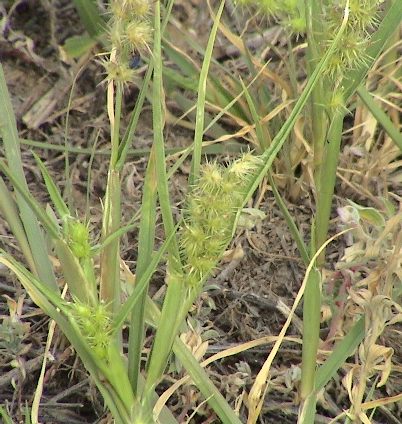Identification
A warm season annual grass with tufted stems. It grow 8″ to 12″ tall, occasionally erect, but usually spreading horizontally and forming dense mats. Leaf sheaths are flattened, very loose, smooth with hairy margins. Leaf blades are flat, roughened, 2 – 6″ long and 1/4 inch wide with rounded margins. The spikes are 1-3″ long and bear clusters of 10 to 30 burs. Burs are thickly set with stiff, sharp, spreading spines. They usually contain two light brown, oval to oblong seeds.
A native of Europe, longspine sandbur is a nuisance throughout most of the U.S. It grows in cultivated fields, pastures and waste areas; but favors sandy or well drained, gravely soils. It can be particularly troublesome to livestock causing injury to mouths, noses or eyes that come in contact with the mature burs. The presence of burs also reduces the value of wool. Sandbur is commonly spread by animals and machinery. Flowering and seed production occur from July to September.
Control:
Preemergent control – pendimethalin, DCPA, trifluralin + benefin
Postemergent control – glyphosate (Roundup) (apply when weeds are
very small, for best effect.)




